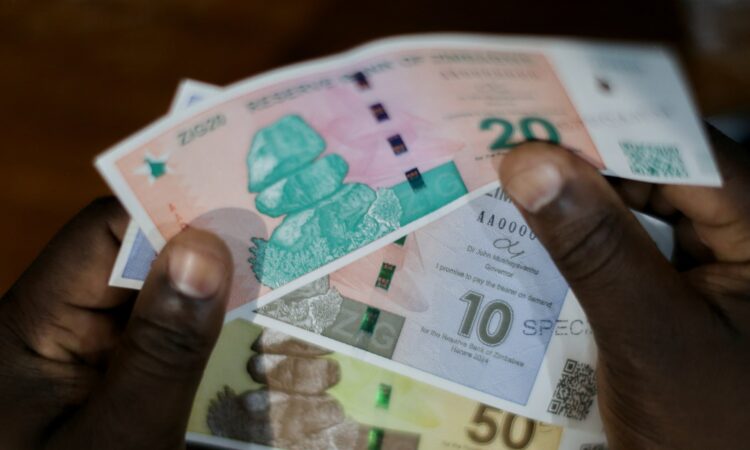Zimbabwe introduces new gold-backed currency to tackle inflation | Business and Economy News

Zimbabweans have 21 days to convert their old cash into new money, according to the central bank.
Zimbabwe’s central bank has launched a new “structured currency” backed by gold, as it seeks to tackle sky-high inflation and stabilise the country’s long-floundering economy.
The new currency – called Zim Gold (ZiG) – will be backed by foreign currencies, gold and precious minerals, John Mushayavanhu, the governor of Zimbabwe’s Reserve Bank, told reporters in the capital Harare on Friday.
Mushayavanhu said the ZiG would circulate alongside a basket of other currencies.
He said the central bank would also introduce a market-determined exchange rate.
“With effect from today … banks shall convert the current Zimbabwe dollar balances into the new currency,” he said.
The move is aimed at fostering “simplicity, certainty, [and] predictability” in Zimbabwe’s financial affairs, he added, presenting the new banknotes that come in eight denominations ranging from one to 200 ZiG.
The new notes feature a drawing of gold ingots being minted, as well as Zimbabwe’s famous Balancing Rocks, which already appeared on the old ones.
Zimbabweans have 21 days to convert their old cash into new money, Mushayavanhu said.
Sufficient reserves to back new currency?
The Zimbabwean dollar has lost almost 100 percent of its value against the US greenback over the past year.
On Friday, it was officially trading at about 30,000 against its more coveted US counterpart – and at 40,000 on the black market, according to tracker Zim Price Check.
Its poor performance has contributed to the Southern African country’s high inflation rate, which after climbing well into the triple digits last year, was at 55 percent in March, according to official data.
The current inflation rate has piled pressure on the country’s 16 million people who are already contending with widespread poverty, high unemployment and a severe drought induced by the El Nino weather pattern.
Soaring prices have also brought back memories of 2008, when hyperinflation was so out of control that the central bank even issued a 100-trillion-dollar note, which is now a collectors’ item.
Amid these economic challenges, analysts have questioned whether Harare has enough reserves to adequately back the new currency, and if the latter could suffer from volatility in gold prices.
On Thursday, President Emmerson Mnangagwa inspected the central bank’s vaults that Mushayavanhu – who was appointed earlier this year – said hold 1.1 tonnes of solid gold.
The bank also has almost 1.5 tonnes more abroad, as well as $100m in cash and precious minerals – such as diamonds, that if converted into gold would account for another 0.4 tonnes, Mushayavanhu said.
Altogether, the reserves’ value totals $285m, which Mushayavanhu highlighted was “more than three times cover for the ZiG currency being issued”.
Meanwhile, the central bank added that it would also adopt a tight monetary policy, linking money supply growth to growth in gold and foreign exchange reserves.



